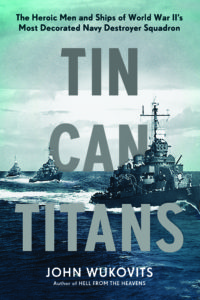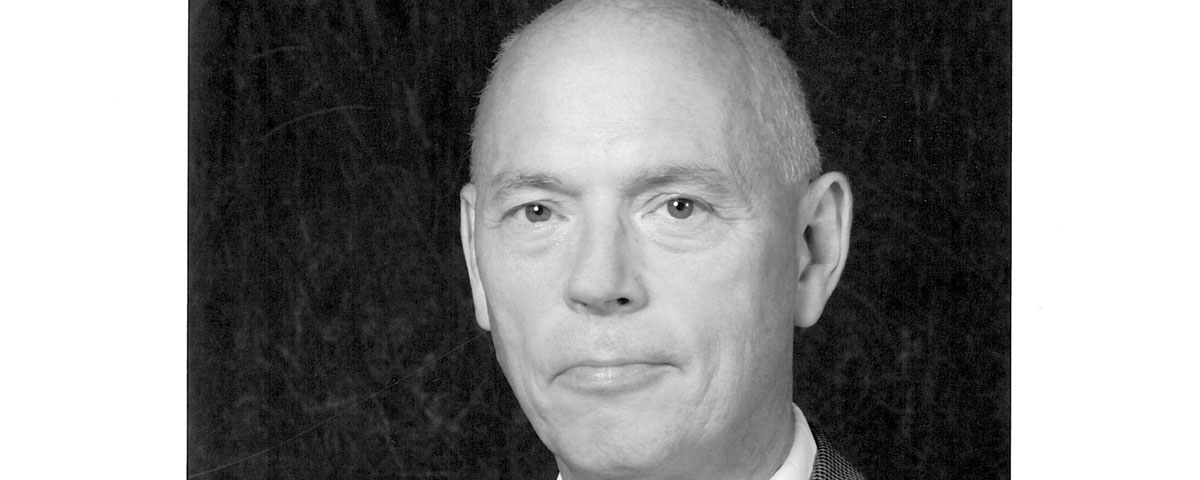JOHN WUKOVITS is a military historian specializing in World War II. He is the author of nine books including Tin Can Titans: The Heroic Men and Ships of World War II’s Most Decorated Navy Destroyer Squadron, which has just been published by Da Capo Press. Wukovits lives in Michigan.
1. How did you become interested in military history?
I first became interested in fourth or fifth grade when I read a book about the Pacific War. I was captivated with the story, and from that moment on, my interest in World War II, and specifically the Pacific Theater, deepened. I devoured history books all through elementary, junior high, and high school. When I attended Notre Dame and received my degree in history, I was fortunate to work under Dr. Bernard Norling, who taught a class in World War II. When I began my writing career almost 20 years later, he readily agreed to lend his advice and support to the projects.
 2. What drew you to writing this book?
2. What drew you to writing this book?
I settled on this project while I was writing the book previous to it. Hell from the Heavens was the story of a single destroyer in the Pacific. I wondered if much had been done to illustrate the role of a destroyer unit, similar to the way Band of Brothers handled an Army unit in Europe, and learned that not much existed along those lines. After a lengthy search, I chose Destroyer Squadron 21 (Desron 21), the most decorated destroyer squadron of the war, because the unit provided stirring deeds, courageous commanders, and gallant crews. Above all, elements of the squadron participated in almost every major campaign from Guadalcanal in late 1942 until the surrender in 1945.
3. Has growing up where you did have an effect on your interests or your writing?
As far as location, no. I was simply always impressed with writers and thought it would be great if I could achieve something along that line. As far as influences, yes. My parents urged me to do my best at whatever I selected, and their love and support for me was unquestioned. My history adviser at Notre Dame, Dr. Norling, and my writing mentor, Tom Buell, were instrumental in helping my writing career gain momentum.
4. What kind of research do you do, and how much research do you do before you begin writing?
I take pride in my research, which takes up two-thirds of my time in writing a book. First of all, I scour archives for primary material. Since I try to tell my stories through the experiences of a few people who were involved, I especially look for letters, reminiscences, and military reports. I then read everything I can find on the subject matter, including biographies, histories, and memoirs. After that I interview as many survivors as possible. I focus on first-person accounts and interviews because I hope to form a connection between the main characters and the readers. A reader becomes more involved in a story if he or she connects with a person in it.
5. How long did you work on this book?
I like to have two years from conceiving the idea to handing in the complete manuscript. The first two-thirds, as I mentioned, is spent in research, interviews, gathering photographs, etc. The final one-third comprises the actual writing of my various drafts.
6. What’s next for you? What are you working on?
My next book is almost finished. Seven or eight years ago I became interested in the stories of 29 chaplains and six missionaries from the University of Notre Dame who were involved in World War II. Among other places the 27 men and two women were posted in both theaters, and were present at the Death March, Iwo Jima, Saipan, and the Philippines, plus Sicily, Anzio, Normandy, the Bulge, and Dachau in Europe. Seven became prisoners of war. Their stories, while in some cases tragic, are uplifting and illuminate the ability of the human spirit to overcome horrendous obstacles. The book also shows that the labors of chaplains in the midst of battle take second seat to no one. MHQ





